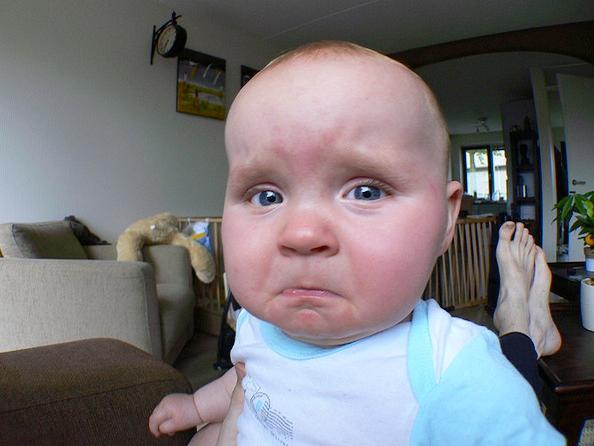Twitter shows universal mood swings
Photo of a sad baby (Image by Flickr user hacky (cc:by))
Story from The Takeaway. Listen to audio above for full report.
People are generally cheerful around breakfast time, despite being a bit grumpy as they roll out of bed. Then people’s moods fade a bit until the late afternoon, when there’s a low point. Then people’s moods generally rally again after dinner.
The pattern may sound familiar, but it’s been confirmed by social scientists looking into millions of status updates on Twitter. “Twitter is a public conversation,” reporter Benedict Carey of The New York Times explains. “Social scientists are starting to mine all sorts of electronic digital data, to see if there are any patterns in the moods of people over a day over a week as the seasons change.”
An interesting aspect of a recent large-scale study from Cornell was that patterns remained remarkably similar across national borders. “They’re showing that this is a fairly universal thing, at least going by these small text messages,” Carey explains. “They had more about 2.5 million people, more than 84 countries, I think a total of about 500 million texts and tweets.” He says, “It seems to track and match up across the world.”
As Twitter continues to grow, more and more scientists are trying to mine the social networking site for more information. “This is the kind of data that social scientists think could really add to or perhaps transform the field,” according to Carey. “Up till now we’ve had very small studies comparatively, you know 30 graduates or 50 people… now we’ve got millions going up to billions.”
The findings also show something universal in people’s moods. “The reassuring thing about it is that it’s not just you in the pit of the late afternoon,” Carey says. “It’s not that you’re getting depressed, or that you’re a fraud, or that you’re deep-down evil, or that you can’t work, or that you’re an idiot, it’s that you’re a human.”
——————————————————
“The Takeaway” is a national morning news program, delivering the news and analysis you need to catch up, start your day, and prepare for what’s ahead. The show is a co-production of WNYC and PRI, in editorial collaboration with the BBC, The New York Times Radio, and WGBH.
